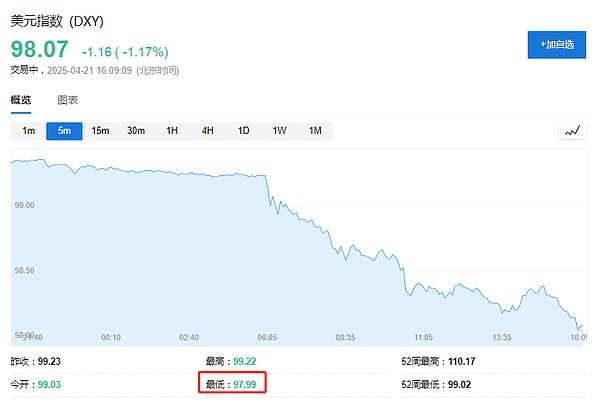"Despite President Trump's concessions on tariffs, the damage to the dollar has been done. The market is reassessing the structural appeal of the dollar as the world's global reserve currency and is undergoing a rapid de-dollarization process," wrote George Saravelos, global head of foreign exchange research at Deutsche Bank, in a report last Friday.
"In sharp contrast to market concerns, many in the Trump administration believe that a strong dollar is a burden on the United States.
This view holds that the dollar's reserve currency status does more harm than good, because excessive strength will hurt the competitiveness of U.S. exporters. Stephen Miran, chairman of the Trump administration's Council of Economic Advisers, made this clear in a speech last week:
"While demand for dollars does keep our borrowing rates low, it also distorts money markets. This process places undue burdens on our businesses and workers, making their products and labor uncompetitive on the global stage."
Whether intentional or not, almost every action taken by the Trump administration in the first three months of its presidency has dealt a heavy blow to the dollar's support level. Last week, the dollar index fell 2.8%, the seventh worst weekly performance in three decades, and the cumulative decline so far this year has reached 8.2%.
03 Is it chaos or strategy?
The fundamental reason why the market and Trump have different views on the dollar is that they observe from different angles.
In the market's view, the dollar, which is usually a safe-haven asset, has abnormally weakened in the face of financial market fluctuations, showing that the dollar's dominance is shaken and is a manifestation of disorder and chaos.
And some analysts believe that for the Trump administration, "chaos itself" is actually a strategy. Trump sees Powell as an obstacle. Under this framework, Federal Reserve Chairman Powell will either be forced to cut interest rates or face the risk of being fired. The resulting market volatility is not collateral damage, but a means to accelerate the "transformation of capital from virtual to real".
Sarah Bianchi, a senior analyst at Wall Street investment bank Evercore ISI, warned:
"What we are really worried about is that while Trump may be able to reach some agreements on tariffs, the problem is that when the United States faces a broader crisis of confidence, even a comprehensive concession on trade may not help."
This means that whether the status of US dollar assets is weakened or lost will be the key to determining Trump's success or failure.
04 Where will the dollar go next?
Looking ahead, there are different views on the outlook for the dollar.
Mark Sobel, the US chairman of OMFIF (a financial think tank) and a former senior Treasury official, believes:
"Although the dollar's dominance will remain unchanged for the foreseeable future because there is no viable alternative, the value of the dollar may continue to fall."
Sobel further pointed out that the trade war is just the latest example of this administration's "contempt for the rest of the world", and "trusted partners and allies" as a key pillar of the dollar's dominance have been forgotten.
Stephen Jen, a long-term foreign exchange strategist and head of Eurizon SLJ Capital, is more pessimistic. Jen believes that the current US dollar is actually overvalued by about 19% against major currencies. If the US recession is so severe that the Federal Reserve is forced to cut interest rates sharply, cyclical, structural and political factors will work together to cause a sharp depreciation of the US dollar: "Various factors are converging, and the US dollar will enter a multi-year correction phase." "For many years, the overvaluation of the US dollar has been a factor in the decline of US competitiveness, and the widening trade deficit and tariffs are a response to this unfavorable reality." Goldman Sachs also said that the current US dollar valuation deviates from fundamentals and is overvalued by 20%. Goldman Sachs also mentioned a key risk in the report. Currently, there are $2.2 trillion of US dollar-related assets in the world that are not hedged by foreign exchange. Once investors decide to withdraw, the impact will be great. Bill Dudley, former president of the Federal Reserve Bank of New York, believes that the US dollar may even strengthen.
According to Dudley, tariffs will weaken the U.S. economy and increase inflation, while the impact on economic growth in other regions may be more significant. This means that other central banks may cut interest rates more aggressively than the Fed, and may cause the currencies of these countries to weaken against the dollar.
 Alex
Alex




